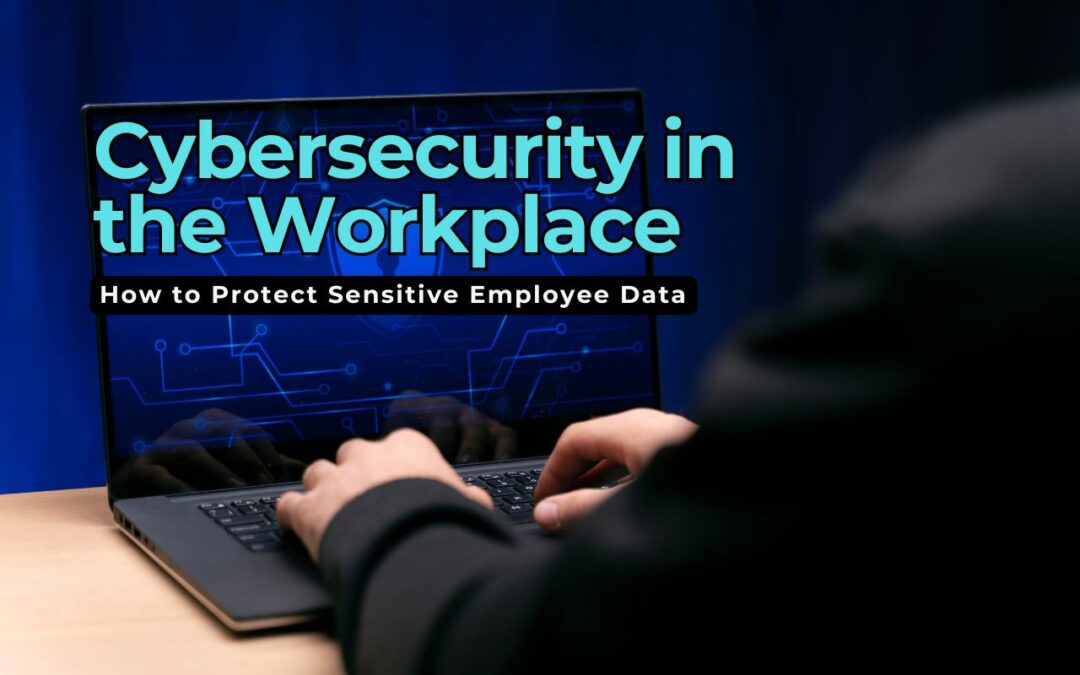In today’s digital-first business environment, cybersecurity in the workplace is no longer just an IT concern – it’s a company-wide responsibility. Organizations are more interconnected than ever, leveraging digital platforms to manage everything from communication and project management to payroll and performance reviews. This level of digital dependency has increased the vulnerability of sensitive employee data, making it imperative for businesses to adopt comprehensive cybersecurity strategies.
Understanding the Importance of Cybersecurity for Employee Data
Employee data includes a broad range of personal and professional information: Social Security numbers, bank details, medical information, addresses, and employment histories. If this information falls into the wrong hands due to a cybersecurity breach, the consequences can be severe, including identity theft, financial fraud, legal liabilities, and loss of employee trust.
According to a 2024 study by Cybersecurity Ventures, global cybercrime costs are expected to reach $10.5 trillion annually by 2025. A significant chunk of these costs is attributed to data breaches and system vulnerabilities exploited in workplaces.
Common Threats to Employee Data in the Workplace
Before implementing protection measures, it’s essential to understand the various threats that compromise cybersecurity:
- Phishing Attacks: Fraudulent emails or messages that trick employees into revealing personal data or login credentials.
- Malware and Ransomware: Malicious software that can lock systems, steal data, or corrupt files.
- Insider Threats: Employees or contractors who intentionally or accidentally expose data.
- Weak Passwords and Credential Theft: Using simple passwords makes it easier for hackers to gain access.
- Unsecured Networks: Public or poorly secured Wi-Fi networks can be a playground for cybercriminals.
- Outdated Software: Legacy systems or unpatched applications are vulnerable to attacks.
Essential Strategies to Protect Employee Data
1. Implement a Comprehensive Cybersecurity Policy
Start with a company-wide cybersecurity policy tailored to the needs and size of your organization. The policy should outline:
- Acceptable use of company systems
- Rules for handling sensitive data
- Procedures for reporting suspected breaches
- Access control protocols
This policy must be accessible, regularly updated, and reviewed during employee onboarding and training sessions.
2. Encrypt Sensitive Data
Data encryption is a foundational layer of protection. Encrypt both data at rest and in transit. This ensures that even if cybercriminals gain access to systems, the stolen data remains unreadable without the proper decryption key.
3. Invest in Employee Cybersecurity Training
Human error is one of the top causes of security breaches. Regular training sessions on cybersecurity best practices empower employees to recognize threats such as phishing and social engineering.
Training topics should include:
- Spotting suspicious emails
- Safe internet browsing habits
- Proper password management
- Secure file sharing
4. Use Multi-Factor Authentication (MFA)
Multi-Factor Authentication adds an extra layer of security by requiring users to verify their identity through additional means (e.g., SMS code, authenticator app) beyond a password. This makes unauthorized access significantly more difficult.
5. Conduct Regular Security Audits and Risk Assessments
Routine audits help identify vulnerabilities and address them proactively. Security assessments can pinpoint weak points in software, network configurations, or employee behavior that could compromise data integrity.
6. Limit Access Based on Role
Not all employees need access to all company data. Implement a role-based access control (RBAC) system to ensure employees can only access the information necessary for their job functions.
7. Secure Endpoints and Devices
With the rise of remote and hybrid work environments, endpoint security is crucial. All devices connected to the company network should have updated antivirus software, firewalls, and remote wipe capabilities in case of theft or loss.
8. Update and Patch Systems Regularly
Hackers often exploit known vulnerabilities in outdated software. Make it a standard practice to install software updates and security patches as soon as they’re released.
9. Establish a Robust Data Backup Strategy
Regularly backing up employee data ensures that, in the event of a breach or ransomware attack, information can be restored without paying a ransom or suffering data loss. Store backups in secure, encrypted, off-site or cloud-based locations.
10. Create an Incident Response Plan
Despite best efforts, breaches can still happen. Having a clearly defined incident response plan allows your company to act quickly to contain the threat, inform affected parties, and begin recovery efforts.
Legal and Regulatory Considerations
Different countries and regions have varying laws about data privacy and cybersecurity, such as:
- GDPR (General Data Protection Regulation) in the EU
- CCPA (California Consumer Privacy Act) in the US
- HIPAA (Health Insurance Portability and Accountability Act) for health-related data
Ensure compliance with relevant regulations to avoid hefty fines and maintain customer and employee trust. Appointing a Data Protection Officer (DPO) can help manage compliance efficiently.
The Role of Company Culture in Cybersecurity
A strong cybersecurity culture is not just about technology; it’s about mindset. Encourage:
- Open communication about threats and vulnerabilities
- Regular updates on security practices
- Recognition and rewards for employees who exhibit security-conscious behavior
Building this culture takes time but pays off in the form of proactive employees who act as your first line of defense.
Real-World Example: Target Data Breach
In 2013, retail giant Target suffered a massive data breach that affected over 40 million customers and numerous employees. Hackers accessed the network through a third-party HVAC vendor with weak security. The attackers then moved laterally within the system, gaining access to sensitive customer and employee data. This breach cost Target over $200 million and highlighted the importance of securing third-party access and regularly monitoring network activity.
Future Trends in Workplace Cybersecurity
1. AI and Machine Learning for Threat Detection
Advanced systems can now analyze vast amounts of data to detect anomalies and flag potential threats in real-time, significantly reducing response time.
2. Zero Trust Security Models
Assume that no user or device is trustworthy by default. Continuously verify access rights, even for internal users, to prevent unauthorized access.
3. Biometric Security Features
Fingerprint scanning, facial recognition, and voice identification are becoming more common in workplace security systems.
4. Cyber Insurance
More companies are investing in cyber insurance policies to mitigate financial risks associated with data breaches.
Conclusion
Protecting sensitive employee data requires a combination of robust technological infrastructure, well-defined policies, and ongoing education. Cybersecurity should be viewed not as a one-time effort but as a continuous process of improvement and vigilance. As the digital landscape continues to evolve, staying ahead of threats and embracing a culture of security can make all the difference in safeguarding your workplace and its most valuable asset – your people.
By implementing the strategies outlined in this guide, companies can significantly reduce the risk of data breaches, foster employee trust, and maintain compliance with global data protection regulations.













